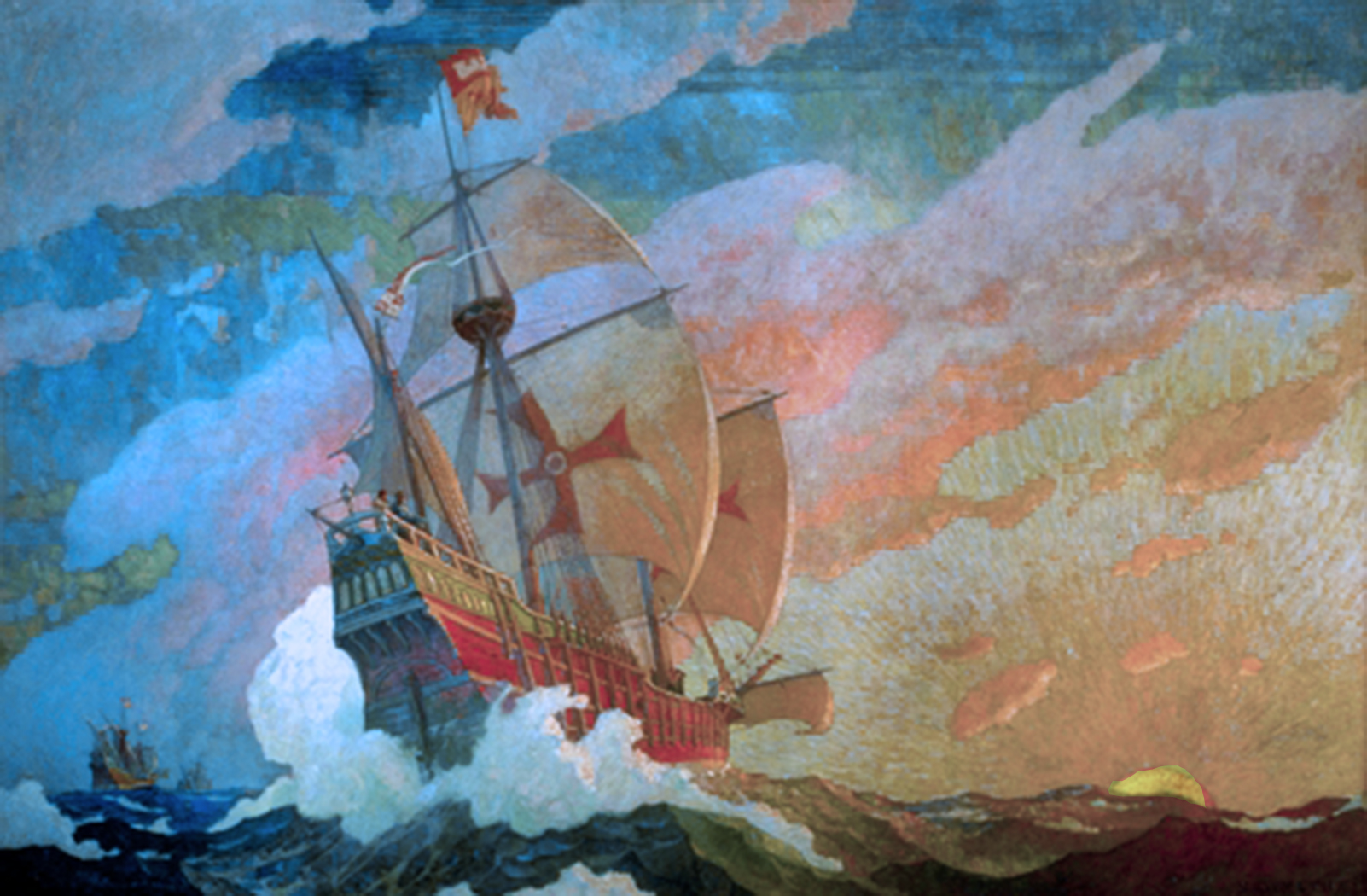Anyone who has taken a cruise will undoubtedly have stories to tell of the vast amounts of food and the diversity of the dishes they enjoyed. Such luxurious fare was not always the order of the day. In a letter to the King and Queen, Italian navigator Christopher Columbus had very specific orders for the food for his expedition. The standard beverage aboard a Spanish long-distance voyage was wine, since water often contained bacteria it would become stagnant and become inconsumable. Along with vino, Columbus requested from the Crown: good sea biscuits (stale sea biscuits have the flavor and consistency of rocks), salted flour (for making bread aboard ship), wheat flour, salted meat (typically beef), olive oil, vinegar, cheese, dried chickpeas, dried lentils, dried beans, salted fish (usually anchovies and sardines), fishing tackle, honey, rice, almonds and raisins.
The olive oil was used for cooking things like chickpeas, lentils, beans and salted meat. The bread they cooked onboard was usually “baked” on the hot coals of the fire pit. One of the sailors would cook the meal in the fire pit and that would be the one hot meal served every day, usually around at 11:00 am. The meal would be served in a large wooden trencher and the crew may have had small wooden bowls for their portion. The sailors would use the knives they carried for work (for cutting rope and sail cloth) to cut or pick-up large pieces of food. Otherwise, they did not have any forks or spoons. The primary drinks were wine and water, which were kept in barrels onboard. There was no coffee or tea to add to the water and since the water was unfiltered, it soon became foul, especially in the hot, humid areas of the southern Atlantic Ocean. It was well-known at the time that alcohol in wine allowed it to keep far longer than water. After a few weeks at sea, water was only used as a last resort. A sailor would always be in charge of tending the firebox and at the end of the day, it would be extinguished for the night, since the risk of fire on board a ship was not to be ignored and could spread quickly while a crew swept.




